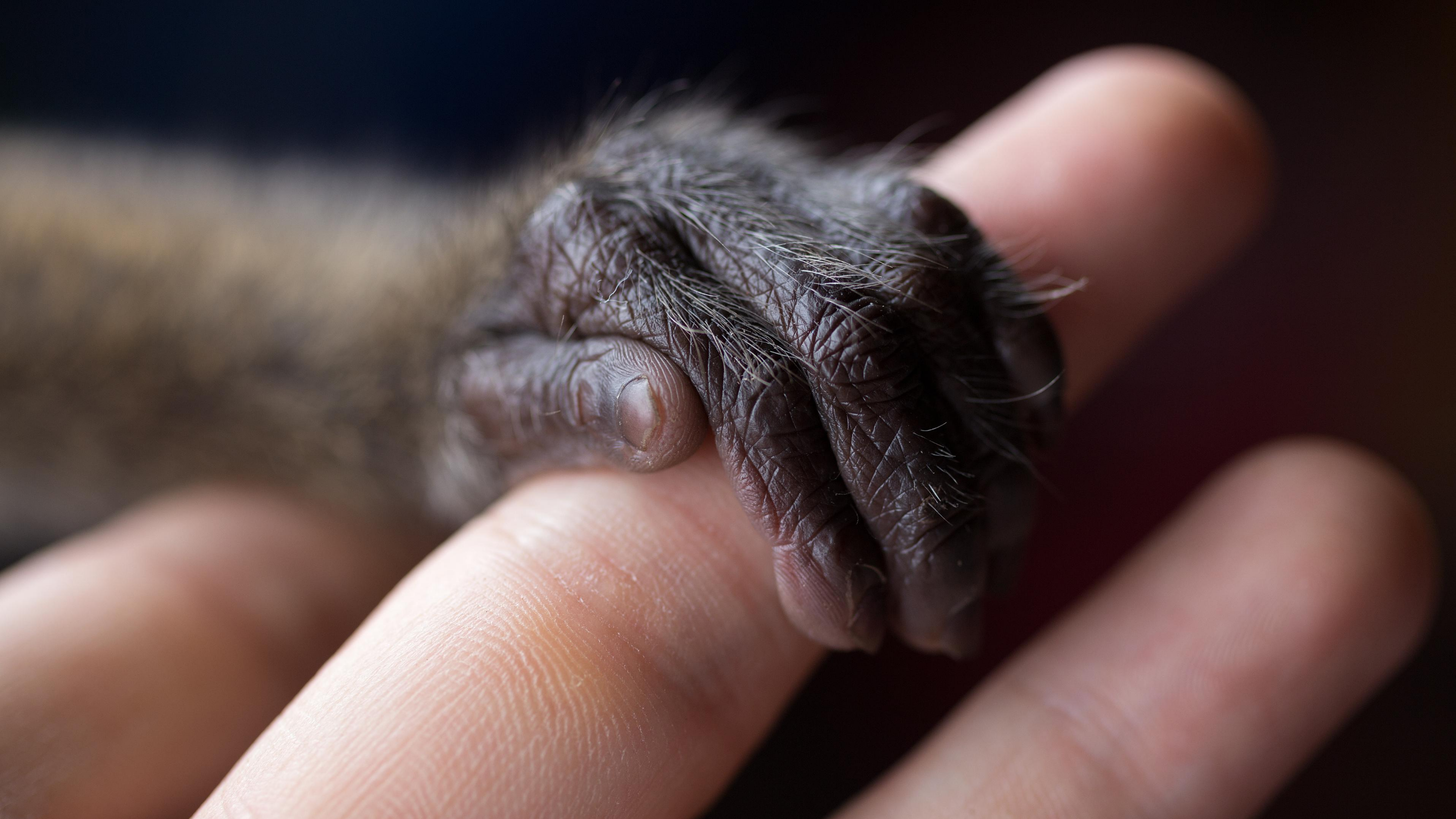
Were you a kid who loved animals? I grew up wanting to be a veterinarian. To help animals for a living.
I became fascinated with Jane Goodall. By the time I entered the University of Wisconsin-Madison as a freshman, I jumped at the chance to enroll in “Animal Behavior—The Primates.” (According to the Wisconsin State Journal, this course is so popular, it’s been filled to its limit of 350 students every year since 1985.)
At the front of the lecture hall stood Professor Chris Coe, a psychologist and director of the university’s Harlow Primate Laboratory. On the projector, he showed a photograph of a former student who is now working with—!—Jane Goodall.
That could be me, I thought.
That’s how it all began. I was 19, wide-eyed, and passionate about caring for animals. I was wholly unprepared for the trauma to come.
Life in a metal box
My sophomore year, I switched my second major to Zoology. I dreamed of a career in primate conservation. I thought I needed hands-on experience, so I took a job at the primate lab.
I honestly don’t know what I expected. But here’s what I saw:
Row upon row of caged monkeys.
Chattering and banging on the metal bars, a sound that echoed through the otherwise empty space.
The monkeys lived in metal boxes and sat on metal ledges. Their tiny feet curled around wire flooring where their feces collected.
For a monkey in a “single cage,” her only interaction with another animal was when she glimpsed a monkey in the row of cages across from her. This wasn’t always easy to do. In some rooms, the bottom row of cages was so dark, we had to carry flashlights to do our health checks.
Monkeys in “pair cages”—two connected metal boxes—struggled too. Like when staff put a female into a male’s cage to breed. Sometimes, I would hear the female screaming and return to find blood. Forced into a cell with a stranger, injuries were not uncommon.
patrick, the newborn
patrick was the first newborn monkey I cared for on my own. He wrapped his arms around my hand, and his legs around my wrist. I used a small syringe to feed him.
I thought, How cool is this? I’m feeding a baby monkey!
Just as quickly, another thought crept in—He’s a new and fragile little being. And I’m helping him to, ultimately, be confined to a cage for the rest of his life.
patrick pressed against me, our bodies sharing warmth. I hated putting him back in the incubator, clinging to a device meant to mimic his mom. His life would never be his own.
Animal experimentation hurts all of us
I worked in the lab from 2011-2013. I was 20 when I started. I’m almost 30 now—and still grappling with a past that feels impossible. How could I have returned to the primate lab day after day, month after month, for over two years? Just thinking about it makes me crumble.
Remembering patrick still sends shocks through my system. My body literally shakes. And my memories aren’t always clear. That’s what trauma does to you.
I wonder what trauma has done (or did) to patrick.
It hurts to think of the hundreds of monkeys who will be forever tormented by their experience at the University of Wisconsin-Madison—
-
The monkey who screamed and screamed when I took him out of his cage to give him his medicine via injection. All he wanted was to be put back in that little metal jail cell. Can you imagine that?
-
The newborn monkey who had a seizure and died in my hands.
-
The babies I fed late at night. After everyone left for the day, I sat holding them. I looked into their tiny eyes, and despaired—This is not where you belong.
Doing something with the damage

Thank you for reading,
Maddie